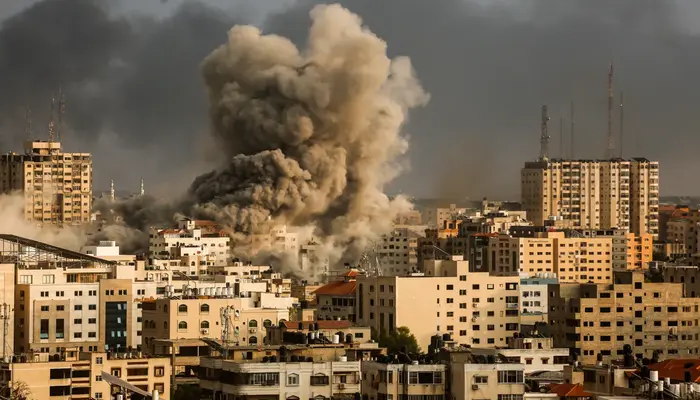For over a year, Israel has carried out relentless attacks on Gaza, targeting hospitals, displacement shelters, and residential areas, killing tens of thousands, including countless civilians. This escalating humanitarian crisis has brought Israel’s actions under scrutiny while raising questions about the level of public awareness and concern within the country. The keyword “Gaza humanitarian crisis” highlights the severe impact of these actions on the trapped population.
Devastation in Gaza
Since October 2023, Gaza has been under siege, leaving its residents with limited access to food, shelter, and essential services. The destruction of hospitals, schools, and displacement centers has created a dire situation for the injured and sick. Northern Gaza, in particular, faces a “siege within a siege,” with its population cut off from basic necessities. The Kamal Adwan Hospital, one of the last functioning medical facilities in the area, was stormed and destroyed by Israeli forces, leaving the injured without medical care.
Mounting Civilian Casualties
Israel’s war on Gaza has resulted in the deaths of over 45,000 people and injuries to more than 107,000 others. A significant majority of these victims are civilians, including thousands of children who have lost their lives, limbs, or families. Amid this devastation, attacks on hospitals and schools—shelters for those displaced by bombings—have become disturbingly common.
Read: Civil Defence Workers Killed in Escalating Israeli Strikes on Gaza
Media Control and Public Awareness
Despite the scale of the Gaza humanitarian crisis, many Israelis appear unaware of the full extent of their government’s actions. Analysts attribute this to tight media control. Prime Minister Benjamin Netanyahu’s administration has increasingly censored dissenting voices by shutting down independent outlets, arresting journalists, and imposing restrictions on foreign media. Liberal Israeli newspaper Haaretz remains one of the few platforms openly criticizing the government’s actions.
Rebecca Vincent, director of campaigns at Reporters Without Borders, criticized the Israeli government’s approach, stating, “Netanyahu’s administration is manipulating narratives to support its war aims while restricting press freedom. This has devastating implications for democracy in Israel.”
Shifting the Narrative
The controlled narrative has allowed misinformation to spread. Claims often shift the blame for humanitarian suffering onto Hamas while downplaying Israel’s role. Reports of famine in Gaza are framed as issues caused by Hamas, despite mounting evidence to the contrary. Similarly, attacks on international figures and humanitarian facilities are frequently omitted or downplayed in Israeli media.
Silencing Opposition
Humanitarian organizations advocating for Palestinian rights report increased hostility. Dr. Guy Shalev of Physicians for Human Rights-Israel noted that limited media coverage has further marginalized their efforts. “The focus is entirely on reinforcing government narratives,” Shalev explained. “There’s little room to discuss Palestinian suffering.”
A Society Divided
Haaretz columnist Alon Pinkas believes much of Israeli society remains in denial about the Gaza humanitarian crisis. While some Israelis supported military actions after the October 2023 attacks, many now consciously ignore available information. Shalev expressed concern over the growing sense of isolation and nationalism, describing it as “a far-reaching belief in Jewish supremacy that transcends political divisions.”
The ongoing crisis in Gaza not only raises questions about Israel’s actions but also highlights the dangers of a controlled media landscape and limited public accountability.
Follow Day News on Google News, Instagram, YouTube, Facebook, Whats App, and TikTok for latest updates
